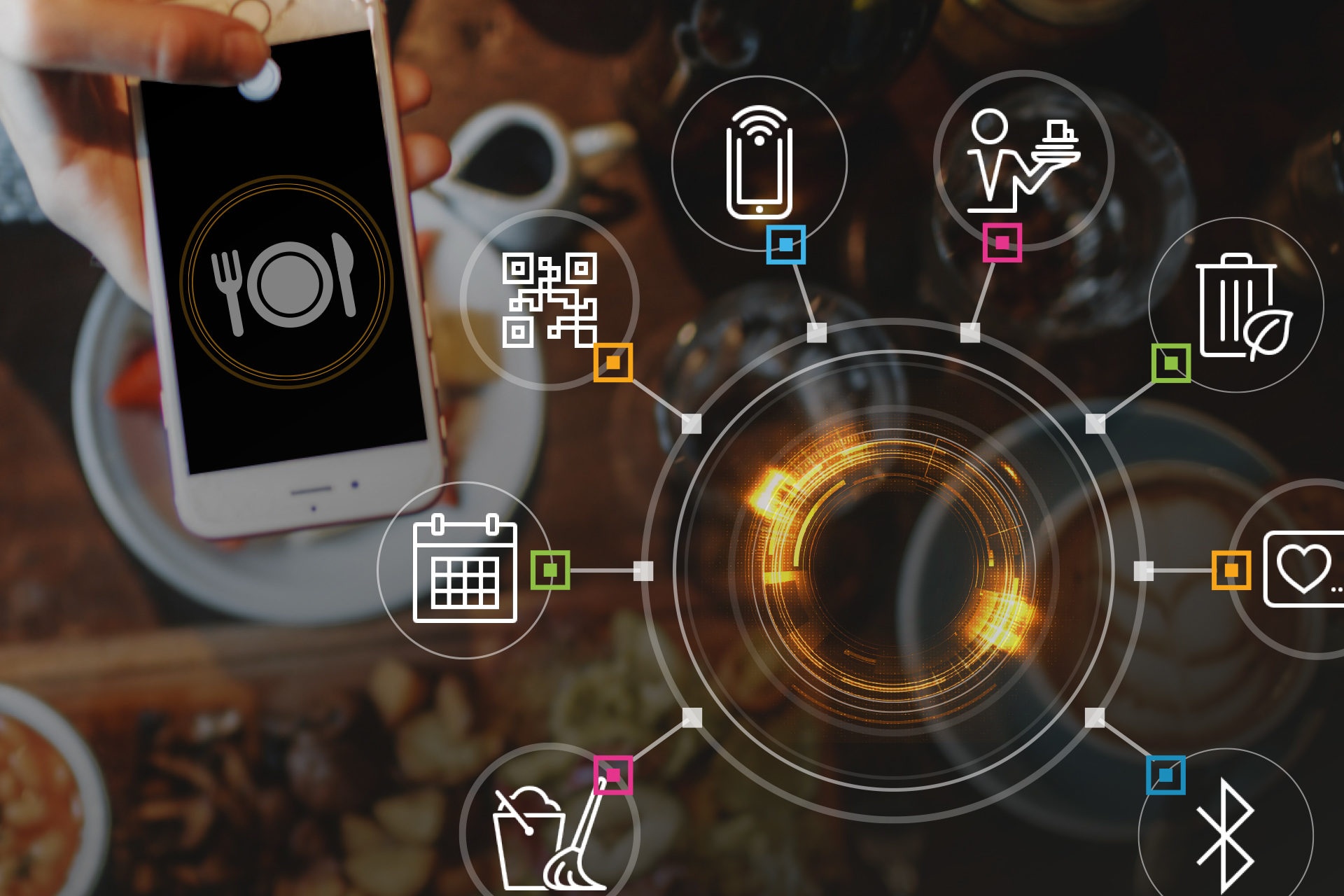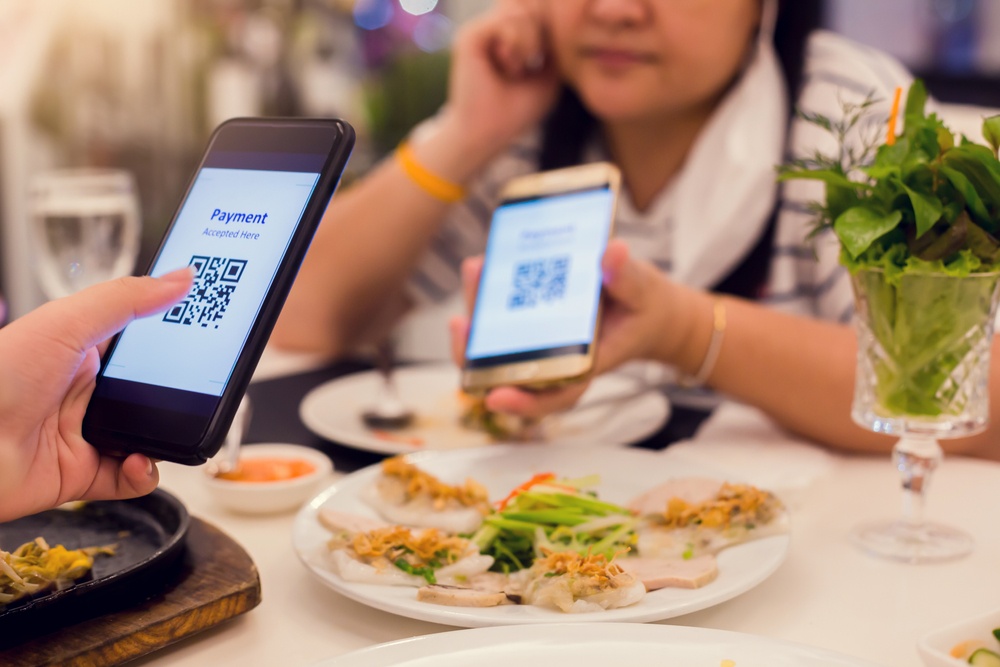It comes as no surprise that moving forward from a pandemic in a digitally advanced age, the customer experience (CX) across all industries has had to take on a new digital form. Now the experience can be extended to both on and off-premises, achieving great results through the union of the online and the offline worlds. This is why understanding CX design is now imperative when running a competitive business in today’s fast-evolving food and hospitality sectors.
In order to thrive, restaurants need to master the ability to deliver consistently engaging and memorable experiences that are capable of driving a connection to their brands at every touchpoint. Factors such as digital advancements, industry trends, and shifting consumer preferences all indicate that the future of customer experience is a more frictionless, autonomous, and convenient one.

Frictionless experience: less is more
In a world shaped by digital transformation, an increasing number of consumers crave experiences that are a natural extension of their new normal. Users can pay their bills, shop for groceries, and now even manage their businesses all online. This expansion of online services has fostered an experience that favors the least amount of friction with any intermediaries, whether they are bank tellers or waiters, customers are increasingly seeking more of a one-click type of check-out experience. According to The 2022 Visa Back To Business study, a little less than half of consumers (41%) said they plan to shift to using only digital payments within the next two years, or are already cashless. There is no doubt that the shift to a contactless economy is here to stay, and businesses need to keep up.
It is clear that mobile devices will continue to provide the dominant interface for guests to access F&B services, communicate with service providers, manage their loyalty program accounts, and initiate payments and other transactions. In-line with a frictionless guest experience, restaurants will seek out brands that offer tableside payment options and QR payment codes where customers can order and pay from the comfort of their seats. We will also likely see more focus on voice commands (similar to the likes of Alexa or Siri) to interface with technology, request services, and perform business transactions.

The industry will also witness a rise of native delivery options as consumers will start to favor making their orders straight from the restaurant, as opposed to going through a third party, in order to minimize mistakes, reduce delivery fees and guarantee higher food quality.
Furthermore, curb-side and drive-thru pick-up will also see an increase in use, alongside the ‘skip-the-line’ apps that are competing with the existing online delivery model. When using skip-the-line apps customers can, with a few taps on their phone, order ahead of time, pay in advance, and even bypass other walk-in customers when picking up their orders. They can also receive special offers or earn rewards points, and, at the very least, look up restaurant menus and locations.
Autonomous
In order to achieve more frictionless experiences like the ones mentioned above, autonomy is crucial. Customers can take ownership of their experience through enablement platforms designed for a more comfortable form of self-service. This new way of conducting customer attendance led to an increase in self-ordering kiosks and tableside ordering, whereby customers interact with intuitive and user-friendly interfaces to scout menu options, submit their orders, and pay, without the need for an intermediary.
One of many advantages of using self-service kiosks, especially with QSRs, is boosting profitability, and increasing the customers’ basket size by 40-50% on average. This is the result of automatic upsell prompts generated by kiosks, in addition to a smoother transaction experience due to reduced social friction. These customer-enablement platforms allow restaurateurs to build stronger relationships with their guests through smart and personalized order suggestions, leading to greater average basket sizes.
Convenience is key
It is not just a buzzword. Convenience is the most sought-after type of customer experience that represents the combination of all of the above. Studies show that 68% of customers agree that a convenient customer experience alone will prompt them to return to a brand or company.
Another factor that plays a major role when attempting to attract customers with convenience is personalization. Restaurant owners must leverage the utilization of sentiment-driven technologies to customize CX by proactively making menu recommendations, upselling, and getting a sense of the customers’ emotional state.
The ordering experience is not the only component that includes personalization, it also extends to every touchpoint of the brand. This has led to an evolution of the “batch and blast” approach— sending emails and text messages to the entirety of the customer database—to a more nuanced and targeted one that considers contextual relevance, customer segmentation, and the optimization of digital communications channels like push-notifications through restaurants’ apps.
Moreover, the need for more customized experiences has led to an increase in digital loyalty programs that allows restaurateurs to personalize offers based on customer preferences. It also provides incentives that would boost trip-frequency and check size, as customers enjoy the convenience of earning rewards automatically.
Social media & food
As more customization efforts take center stage, a new type of e-commerce has emerged: social food ordering, which is an industry that’s expected to be worth $604.5 Billion by 2027. This essentially means that business owners will set up online shops through their social media platforms enabling customers to order directly from those platforms.
These specific online shops become places where ‘food meets friends’ and present a golden opportunity for brands to learn more about their audiences preferences and purchasing behavior. Due to this, there has also been an increased emphasis on adapting technologies that safeguard customers’ data.
Although social selling has been in existence for a few years now, its current traction is a result of the expansion the media platforms have achieved by incorporating payment solutions from the platforms themselves for a more seamless checkout experience, requiring less steps to reach the final phase of online purchasing.
Conclusion
It is safe to say that equipping restaurants with the latest technology helps drive frictionless, autonomous, and convenient customer experiences. However, it is also proven to proactively ease the labor burden carried by frontline workers and restaurant personnel by helping serve understaffed shifts and impatient customers, all the while optimizing the profitability of digital customer journeys. In order to be able to keep up with an ever-growing and innovative market, the digital customer experience of the future calls for a more robust restaurant techstack. The automation of the management of ordering and payment platforms will eventually be the “make or break” for food and hospitality services.